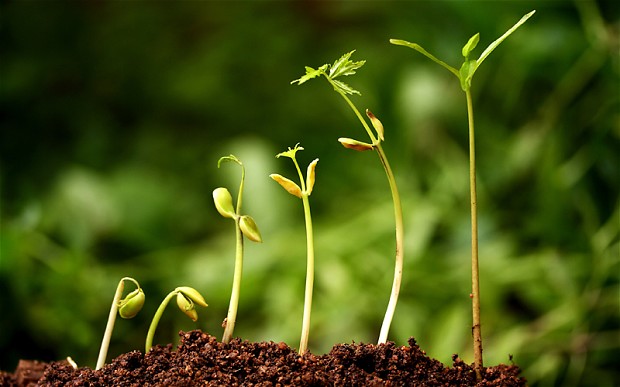 Stages of seed germination
Germination is the growth of an embryonic plant contained within a seed; it results in the formation of the seedling.
Stages of seed germination
Germination is the growth of an embryonic plant contained within a seed; it results in the formation of the seedling.
A seed consists of an embryo, a seed coat, and some kind of storage material.
The major storage material may be endosperm or cotyledons. Cotyledons are formed by using (digesting) the storage material in the endosperm. In dicots, such as peas, there are two fleshy cotyledons. In many monocots, such as corn, most of the storage tissue is endosperm, with a single cotyledon that functions to transfer nutrients from the endosperm to the embryo. In land plants, the zygote is formed within a chamber called the archegonium.
In a dry seed the embryo is inactive. It is said to be in a state of dormancy (a period of rest.) Outwardly, it appears to be without life, but in fact all the chemical activities of life are going on in it although they are very slow and little food is utilized. The dry seeds consume oxygen and give out carbon dioxide, both in extremely minute quantities, and they release some heat as well. When placed under proper conditions the dormant embryo awakens, i.e. it becomes active and starts growing into a seedling. The process by which the embryo becomes active and grows into a new plant is called germination. A fresh seed from a plant normally does not germinate even if the conditions for germination are favorable. It must pass through a period of dormancy during which it undergoes physiological maturation.